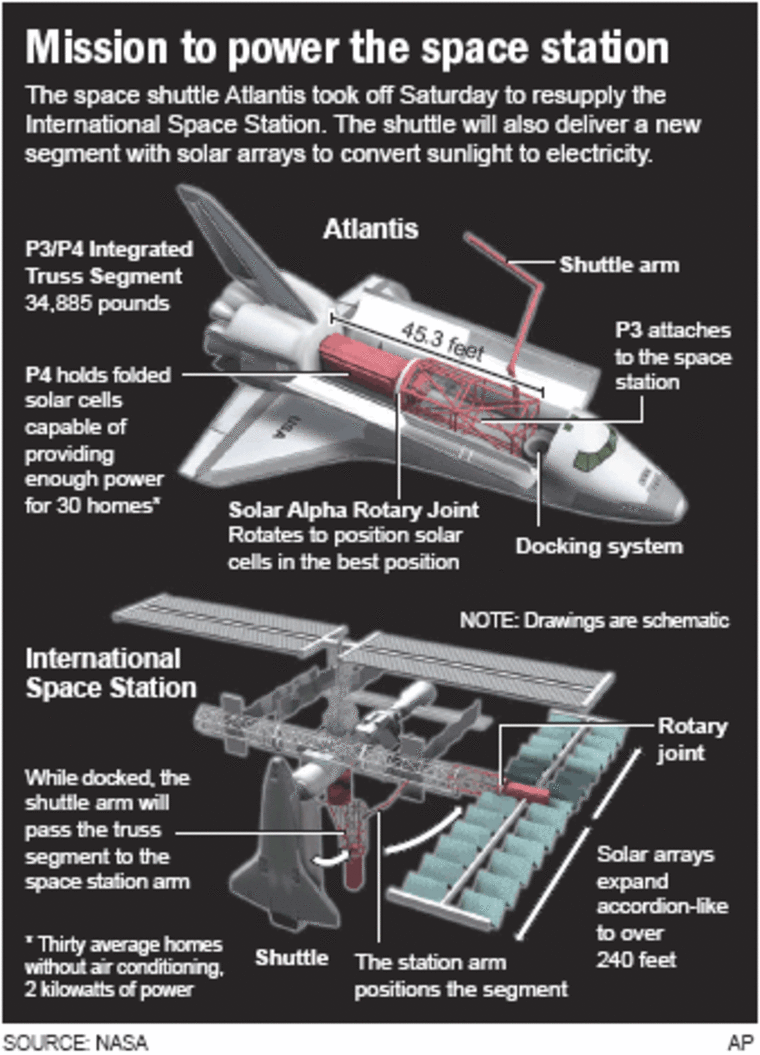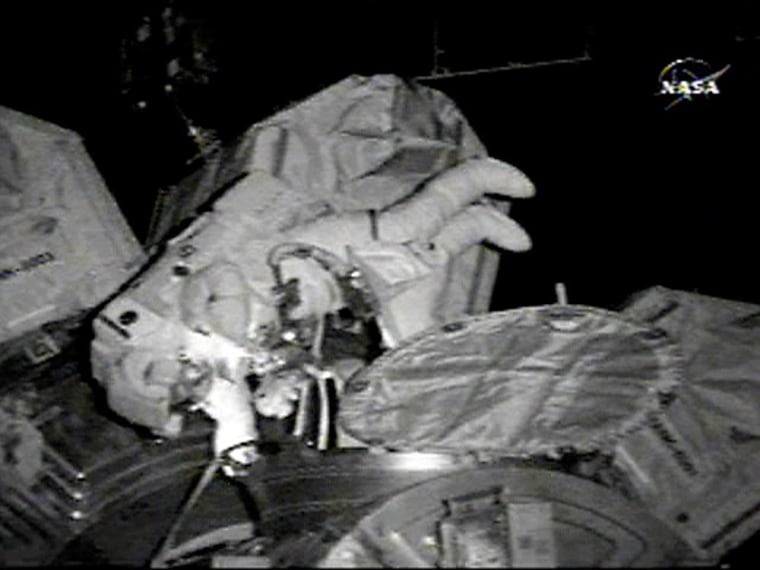Two spacewalking astronauts Tuesday began installing the first big addition to the international space station in more than three and a half years, and NASA pronounced the outing a success, even though a small bolt floated off and got lost.
“I felt today like this is what NASA is supposed to do,” lead space station flight director John McCullough. “This is what we’re here to do.”
Wearing bulky suits and gloves, the two Atlantis astronauts ventured outside to begin attaching a new 17.5-ton boxlike truss section that the space shuttle delivered earlier this week. The job involved connecting 17 wires or tubes and tightening or loosening 167 bolts.
Astronaut Joe Tanner was working with a 1.5-inch (3.8-centimeter) bolt with an attached spring when the washer holding it in fell off. The bolt and spring floated over the head of astronaut Heidemarie Stefanyshyn-Piper and skittered across the truss.
While the washer went out into space harmlessly, Tanner worried that the bolt and spring could get into the wiring and tubing of the truss and cause problems.
“I just hope that bolt is on its way to Mother Earth right now and not on its way” to a crucial joint, Tanner said.
Mission managers unworried
Even though NASA didn’t have any video showing the bolt missing the mechanism, officials said they are certain that the bolt flew off into space harmlessly.
“It’s pretty trivial,” McCullough said. “It didn’t go inside.”
Space debris can be dangerous if it punctures space station walls or spacesuits and can jam crucial mechanisms. However, spacewalkers have a long history of losing things in space. In July, Discovery spacewalkers lost a 14-inch (36-centimeter) spatula that floated away.
More outings ahead
Two more spacewalks will be conducted during the 11-day mission to finish hooking up the new addition to the half-built space station. Construction had been on hold since the Columbia disaster in 2003.

The 45-foot (14-meter), $372 million addition includes two electricity-generating solar arrays that will be unfurled on Thursday. It will provide more power to the international space station in preparation for European, Russian and Japanese science modules to be added in the next few years.
The free-flying bolt marred an otherwise successful and speedy six-hour, 26-minute spacewalk.
“You did a phenomenal job and set the bar very high for the rest of the assembly,” Mission Control told the crew.
Tanner and Stefanyshyn-Piper zipped through a jam-packed list of arduous but mundane construction tasks, putting NASA ahead of schedule in connecting the addition. With extra time, Mission Control assigned them eight extra jobs of bolt removing and cover unlatching that would have been part of a later spacewalk.
Atlantis astronauts Dan Burbank and Steve MacLean will venture outside Wednesday.
The spacewalk was a first for rookie astronaut Stefanyshyn-Piper, who joined an elite club of female spacewalkers.
Only six other women have participated in any of the 159 U.S. spacewalks, and only one has gone on any of the 118 Russian spacewalks. A major reason: Spacesuits are too big for most women, said Stefanyshyn-Piper, who is 5-feet-10 (178 centimeters tall). “If you fit in a suit, then the easier it is to work,” she said.
Engineers determined that a protruding piece of plastic — which NASA initially thought was a filler between tiles — poses no threat at all, said John Shannon, NASA mission management team chairman.
Atlantis’ heat shield is in such good shape — free from the type of the damage that led to Columbia’s disintegration — that it is clear for landing at the end of its 11-day scheduled mission, engineers said.
